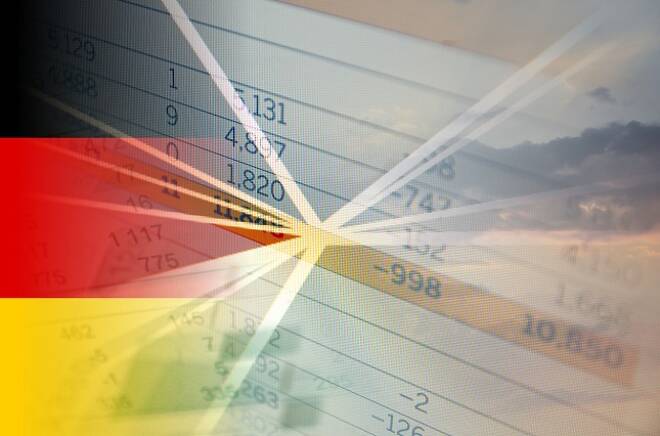Advertisement
Advertisement
DAX Set for Another Testy Day with the US Jobs Report in Focus
By:
After the Thursday sell-off, the US Jobs Report will need to counter the ADP Nonfarm Report to support a DAX rebound and ease hawkish Fed bets.
Highlights
- It was another bearish session for the DAX. On Thursday, the DAX slid by 2.57% to end the day at 15,529.
- Today, German industrial production will draw interest ahead of ECB commentary.
- However, the US Jobs Report will likely have more impact after the market reaction to the US ADP Nonfarm Report.
It was a bearish Thursday session for the DAX, which slid by 2.57%. Following a 0.63% loss on Wednesday, the DAX ended the day at 15,529. Significantly, the DAX visited sub-15,500 for the first time since April 5.
A quiet Asian economic calendar left investors to digest the hawkish FOMC meeting minutes, rising China-US trade tensions, and Janet Yellen’s Beijing visit.
Better-than-expected economic indicators from Germany failed to provide support ahead of a busy US session.
US economic indicators raised bets on consecutive Fed rate hikes in July and September, sending riskier assets into the red. The NASDAQ Composite Index fell by 0.82%, with the Dow and S&P 500 seeing losses of 1.07% and 0.79%, respectively.
According to the CME FedWatch Tool, the probability of a 25-basis point July Fed rate hike stood at 91.1% versus 90.5% on Wednesday. Significantly, the chances of the Fed lifting rates to 5.75% in September stood at 26.4%, up from 18.1% on Wednesday.
Hawkish Fed Minutes Overshadowed German Stats
It was a busy Thursday session, with economic indicators from Germany and the US in the spotlight.
German factory orders impressed going into the European session. Factory orders surged 6.4% in May versus a 0.2% increase in April. Economists forecast a 1.2% rise in factory orders.
Eurozone retail sales figures failed to impress, with consumer spending stalling in May. Economists forecast a 0.2% increase in retail sales.
However, US ADP nonfarm employment change and ISM Non-Manufacturing PMI numbers sent the DAX deep into the red.
The ADP reported a 497k surge in nonfarm employment, with the ISM Non-Manufacturing PMI rising from 50.3 to 53.9. Economists forecast a 228k increase in nonfarm employment and the ISM Non-Manufacturing PMI to rise to 51.0.
Other stats included US Jobless Claims and the US JOLTs job openings. However, investors brushed aside the stats ahead of the US Jobs Report on Friday.
The Market Movers
It was a bearish Thursday session for the auto sector. BMW tumbled by 3.90%, with Mercedes-Benz Group and Continental AG seeing losses of 2.92% and 2.47%, respectively. Porsche and Volkswagen also struggled, falling by 1.85% and 1.83%, respectively.
It was also a bearish session for the banks. Commerzbank declined by 1.71%, with Deutsche Bank sliding by 4.34%.
However, Vonovia and Adidas were the worst performers, with losses of 7.37% and 5.55%, respectively. Boardroom unrest contributed to the Adidas pullback.
The Day Ahead for the DAX
It is a relatively busy day ahead on the European economic calendar. German industrial production numbers for May will draw interest early in the European session.
Economists forecast industrial production to fall by 0.1% in May.
With the German economy in the spotlight, investors should monitor ECB chatter throughout the day. ECB Executive Board Member Luis de Guindos and ECB President Christine Lagarde are on the calendar to speak today.
It is a big day on the US economic calendar. The all-important US Jobs will be the focal point. A surge in nonfarm payrolls and hotter-than-expected wage growth would support a more hawkish post-summer Fed monetary policy outlook.
DAX Technical Indicators
Looking at the EMAs and the 4-hourly chart, the EMAs sent bearish signals. The DAX sat below the 50-day (15,968) and 200-day (15,837) EMAs. The 50-day EMA closed in on the 200-day EMA, sending bearish signals.
A DAX move through the lower level of the 15,785 – 15,845 resistance band would bring the 200-day EMA (15,837) and the upper level of the 15,785 – 15,845 resistance band into view. However, the US Jobs Report needs to counter the ADP Report to support a rebound.
Failure to move through the lower level of the 15,785 – 15,845 resistance band would leave the upper level of the 15,280 – 15,235 support band in view.
The 14-4H RSI sits at 24.23, sending bearish signals and supporting a further pullback to target the upper level of the 15,280 – 15,235 support range.
For a look at the economic events, check out our economic calendar.
About the Author
Bob Masonauthor
With over 28 years of experience in the financial industry, Bob has worked with various global rating agencies and multinational banks. Currently he is covering currencies, commodities, alternative asset classes and global equities, focusing mostly on European and Asian markets.
Advertisement
